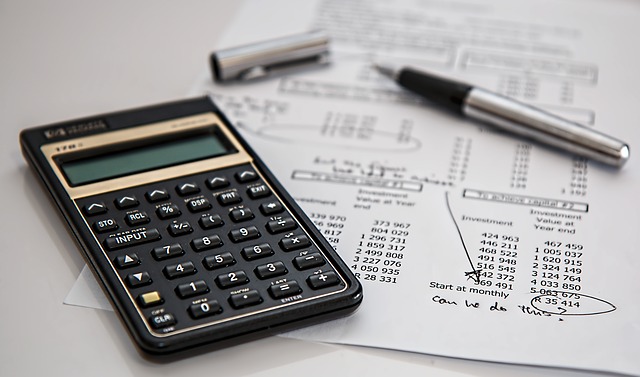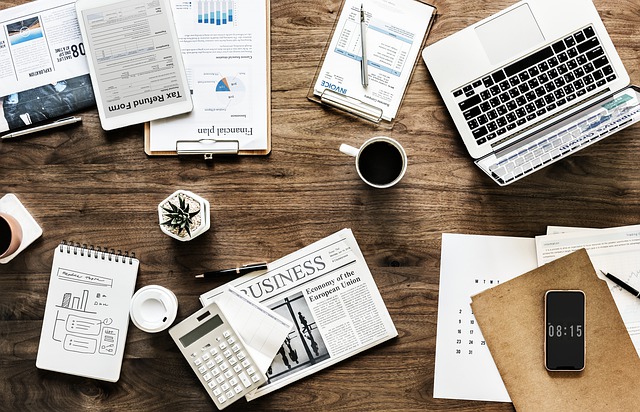Top Blue Chip Stocks, Dividend Stocks and more
View a list of top stocks on NASDAQ and NYSE
Stock Forecasts, Price Charts, Annual Reports and More
Stock Forecasts, Technical Analysis, Price Charts and More
Best Stocks Under $100
More Stock Tools
Hottest Stocks Right Now
A gap stock is a stock that opens with a price that's higher or lower than the previous day's closing price. When the stock opens at a lower price, investors call it a gap down stock. For example, the stock for Company A has a $200 value when the stock market closes on Monday. When the stock market opens on Tuesday, Company A's stock has a $190 value.
Gap down stocks can represent opportunities for investors to earn money quickly. Of course, no one can guarantee that a trading strategy will lead to success. But plenty of people find that they can generate income by following tested gap down stock trading strategies.
Why Do Stocks Open Gap Down?
Usually, stocks open gap down because of something that happens after the stock market closes for the day. For example, the CEO of Company A may get caught in a scandal that prompts shareholders to demand her stepping down from the position.The disruption in the company will give traders doubts about how the stock will perform over the next few weeks or months while Company A searches for a new CEO.
Those doubts can push the stock price down. When the market opens, Company A's stock is already lower than it was at the end of the previous day.
Other events that can lead to a stock opening gap down include:
- Price fluctuations in foreign stock exchanges (markets in Asia, Australia, Europe, and Africa operate outside while North and South American markets are closed).
- Unexpected increases or decreases in sales.
- Disruptions in the supply chain, including weather events, piracy, and political interference.
- Announcements from competitors that make the company's products or services look less desirable.
This specific case doesn't count as a gap down stock because he posted the Tweet during trading hours. Had he posted the message after the stock market had closed, Tesla stock could have opened lower than the previous day's closing price.
What Happens When a Stock Gaps Down?
A few things can happen when a stock gaps down. The effect often depends on how far the stock's price has fallen between marketing closing and opening.If the stock opens within 4% of the previous day's closing price, it often attracts "buy-the-dip" traders. Assuming that the stock attracts enough buyers, its price will go up. When that happens, the investors who took a chance on the gap down stock will earn a profit from their speculation.
It's also possible that the stock will continue losing value. This tends to happen when the stock gaps down (a rule of thumb is) by more than 4%. which indicates a serious problem for the company and its investors.
Of course, it's always possible that a stock that opens with a 4% gap down won't attract buyers. Depending on what drove the price down during after-market hours, investors might not want to take a chance on the company's stock.
If that happens, the stock will either stay close to the opening price or begin losing value. Without interested buyers, the stock's price will not increase.
What Does Gap Down Indicate?
Objectively, a gap down only indicates that a stock lost value between the marketing closing and opening. You need to research the underlying event that caused the gap down. Doing so should help you understand what the gap down indicates.A gap down often indicates that:
- A company has experienced a minor setback that affects its immediate – but not long-term – value.
- Foreign investors sold a large amount of the company's stock, which influenced the stock value when it opened on the U.S. market.
- After-market trading contributed to the company's stock losing value before the stock market opened.
- A large number of trades at the end of the previous day forced the company's stock value down, which wasn't fully expressed until the market reopened the next day.
Gap Down Stock Screener
More often than not, it doesn't take much time for you to learn why a company's stock price has fallen outside of trading hours. Identifying gap down stocks, however, is nearly impossible for the average trader.The NYSE trades the stocks of about 2,800 companies. Can you realistically keep up with the closing and opening prices of that many stocks?
Relying on a gap down stock screener makes it possible for investors to discover gap down stocks, see how far the price has fallen, and decide whether they want to purchase the stocks at their decreased prices.
A gap down stock screener should give you information such as:
- The gap down percentage.
- The stock's last price.
- The stock's current price.
- The stock's daily volume.
- The company's market cap.
- A stock score that helps you determine whether the company will regain its lost value.
Nothing guarantees success, but at least you get to make an informed decision.
Gap Down Patterns
There are several types of gap down patterns that you should learn about before trying to take advantage of trading this kind of stock.Partial Gaps
A partial gap occurs when a stock price opens lower than the previous day's closing price. During the previous day, the stock's price could have been lower than the closing price. As long as the opening price is higher than the previous day's lowest price, you have a partial gap.Full Gaps
A gull gap occurs when the opening price is lower than any of the previous day's low.Breakaway Gaps
Breakaway gaps happen when a new trend begins. Unfortunately, you can't identify a breakaway gap until after it has happened.Exhaustion Gaps
An exhaustion gap takes place at the end of a price pattern. In terms of down gaps, it signals one last attempt for the price to reach a new low.Common Gaps
Common gaps don't fall into identifiable patterns. They're subject to normal changes in the market.Continuation Gaps
A continuation gap happens when stockholders decide to start selling in the middle of a price pattern. It typically happens when news, such as an earnings report, makes people skeptical of a company's future success.How Do You Play Gap Down Stocks?
When you buy gap down stocks, you essentially make a bet that the price will increase. At the very least, you should believe that the price will reach the previous day's closing price. Whether that happens depends on factors like how much the price fell after the stock market closed and what caused the company's stock price to fall.There are two basic approaches that you can take to making money from gap down stocks. You can purchase the stock and hope that it quickly recovers some of its value. Once that happens, you sell the stock to earn a quick profit.
The second way requires a long-term perspective. You see the down gap as a momentary drop in an otherwise reliable stock.
Basically, you think of the stock as being "on sale" and you buy it to take advantage of the discount. You make the stock a part of your portfolio so you can earn money through dividends, waiting for the value to grow, or reinvesting money by purchasing more shares.
The first option is a type of day trading that tries to take advantage of sudden changes in a stock market index, such as the S&P 500.
Gap down stocks can work as a day trading strategy, but it also has the chance to backfire on you. When you rely on small changes in the market to make money, you usually have to purchase a lot of stock at one time.
If you only purchase a few shares, then you won't make enough money to pay for the time you spend researching gap down stocks. If you purchase a lot of shares, you could earn a tidy profit. If the company's value doesn't increase, though, you will have to sell your shares at a loss.
Will Gap Stocks Go Up?
There are no guarantees in the stock market, so you cannot say for certain whether stock gaps will lead to higher price. Even if a down gap stock's value increases, you don't know how high it will go before its price starts to fall again.Although you can't get any guarantees from the stock market, you can make informed decisions that lower risk and help you succeed. The strategy that you choose should vary depending on factors like how much money you can afford to bet, whether the company has a long history of earning profits, and how far the stock price fell between closing and opening.
If you have a significant amount of money that you can safely bet – meaning that losing the money would not hurt your lifestyle – it might make sense for you to focus on stocks with large down gaps. You need to consider several things before purchasing a down gap stock, though.
When you see that a stock plunged after the market closed, you know that you have some potential to make a lot of money over the long-term. Unless the company made a serious blunder, such as violating ethical standards or releasing a terrible product that hurts users, it's likely that the price will regain at least some of its previous value.
However, in the short-term the momentum is likely to push the stock further lower as more and more sellers follow the direction of the most recent trend.
Ideally, you want the share price to do more than recover its value. You want the price to increase as much as possible. Realistically, though, it doesn't matter how high the price goes as long as it increases by a comfortable percentage.
An Example of Successful Down Gap Trading
Let's look at an example to see how you could make money by purchasing a steeply discounted stock.When the stock market closed yesterday, Company A's shares sold for $200. When the market opened today, the shares had fallen by 50% to $100.
You research the company, find out that it suffered a hiccup in its supply chain. As a result, overseas investors became fearful of losing money and sold their shares.
You don't believe that the hiccup will have long-term consequences for the company. In fact, your research shows that the company is already taking steps to address the problem and become more flexible to prevent future issues. This sounds like an excellent opportunity, so you purchase 100 shares in Company A for $10,000.
A few months later, other investors have reached your conclusion. It looks like Company A has used a bad situation to improve its operations.
Now, it has a more streamlined process that costs money and helps ensure product manufacturing and delivery. The shares regain all of their lost value.
At this point, you can sell the shares for $200 each because they have reached their pre-gap value. Doing so will earn you a quick $10,000.
Alternatively, you could hold on to your shares. Company A's improvements make it more profitable, so it attracts more investors. Interest in Company A pushes the stock price to $400 by the end of the year. Now, you earn regular dividends from $40,000 worth of stock that you purchased for just $10,000.
An Example of Unsuccessful Down Gap Trading
The above story could have gone very differently for the investor. What if the company didn't find a solution to its supply chain problem?In that case, the shares might not have regained any of their value. The investor could have even lost money.
Suppose the company's unsuccessful response discouraged investors, so even more people sold their shares. A few days later, Company A's stock sits at $50 per share.
Even if the investor sells the 100 shares, they have lost $5,000 on a bad bet.
Examples of Loss and Gain From Small Percentage Down Gap Trading
The two examples above assume that the investor purchased a high-value stock with a 50% gap. That's quite large. Some investors will see such a large down gap as a reason to avoid buying shares. Instead, they focus on small percentage down gap trading.In the successful version of this story, the investor purchases Company A stock after a 5% down gap. Yesterday's closing price was $100.
Today's opening price is $95. It seems likely that Company A can recover 5%, so the investor spends $9,500 on 100 shares. By the end of the day, the stock fills the gap and even rises to $102. The investor sells all of the shares at $102 each and earns $700. Not bad for one day!
In the unsuccessful version of this story, the investor makes the same purchase. Unfortunately, the price keeps falling. Seeing no other option, the investor sells all 100 shares when the value reaches $75. It seems like the best way to protect from further loss. In this case, the investor has lost $2,000.
What Does It Mean to Fill the Gap?
A down gap stock as "filled the gap" when it reaches the previous day's closing price. For example, if Company A's stocks traded at $100 when the exchange closed on Monday, but the stocks were valued at $50 when the exchange opened on Tuesday, it would fill the gap by reaching $100.Some investors only want to fill the gap because it doesn't require much risk. It's fairly likely that the stock will return to its previous price at some point over the next few days. When that happens, you sell your shares and earn a profit.
Do Stocks Always Fill Gaps?
Down gap stocks do not always fill gaps. It's possible for a stock to continue losing value. It may experience several ups and downs, but it might not return to its previous price. A few companies from 2020 offer examples of stocks that have lost value without recovering.- Occidental Petroleum Corp. (OXY) lost 76% of its value in 2020.
- Marathon Oil Corp. (MRO) lost 69% of its value in 2020.
- Carnival Corp (CCL), the cruise line, lost 70% of its value in 2020.
Conclusion
Gap down stocks can represent excellent opportunities for investors to make money. It's worth repeating, though, that even the most attractive investment can lead to losses.Before purchasing gap down stocks, make sure you research companies, know how much money you feel comfortable spending, and consult trading professionals for advice.
With some luck and a keen eye, you might find ways to turn gap down stocks into moneymaking opportunities.
Investing News

Why Is CoreWeave Stock Down So Much?
AI cloud computing business CoreWeave (NASDAQ:CRWV) has been through a remarkably volatile year. Though the stock has roughly doubled since going public early in 2025, its current price of $78.87 is far below the 52-week high of $187.00 it reached in June. Why is CoreWeave stock down so much since the middle of the year, […]

Why Did Stan Druckenmiller Buy MercadoLibre Stock?
In Q3, billionaire Stan Druckenmiller bought about 4,620 shares of Latin American eCommerce giant MercadoLibre (NASDAQ:MELI) through his Duquesne Family Office. Often described as the Amazon of Latin America, MercadoLibre has been a significant growth business for many years. With share prices having retreated below $2,000, however, MELI is well below the average price of […]

Is DocuSign Stock Undervalued?
Digital signature software business DocuSign (NASDAQ:DOCU) has been struggling over the past year as a market that’s generally friendly to tech firms has surged upward. Shares of DOCU are down more than 30 percent in the past 12 months, despite the business already being profitable and still posting respectable growth numbers. Is DocuSign undervalued now, […]

Is SentinelOne Stock Undervalued?
Cybersecurity major SentinelOne (NYSE:S) has struggled over several years, delivering very large losses to the shareholders who purchased it early on. Peaking at over $75 per share in 2021, S has gradually lost ground and now trades below $15. In the last 12 months, SentinelOne’s struggles have continued, with shares losing a further 33.7 percent. […]

Is Broadcom Stock on Sale?
Chip and software maker Broadcom (NASDAQ:AVGO) has been among the best stocks to own over the past couple of years as demand for AI chips has pushed share prices quickly higher. Though AVGO shares are still up more than 55 percent for the year, they have come somewhat down off of their November highs and […]

Is Bloom Energy The Best Stock to Buy Now?
Shares of energy startup Bloom Energy (NYSE:BE) have advanced by 250 percent in the last year as AI data centers have pushed new energy technologies to the forefront of the investment world. Even with such large gains under its belt, there could still be more room for Bloom Energy to generate additional returns. Is Bloom […]
The #1 Stock Analysis Tool to Make Smarter Buy and Sell Decisions
Get started at Financhill, the #1 investment research platform that is your one-stop shop for finding the best trade ideas today.
-
Top Rated Stock Ideas
Financhill Stock Score is a proprietary stock rating engine that independently evaluates every company based on fundamental, technical, and sentiment criteria so you can find the highest rated stocks in the S&P 500, NASDAQ and NYSE. -
Best Stock Tools Platform
Whether you are looking for the best blue chip stocks, top dividend stocks, most shorted stocks, cheapest stocks today, highest dividend stocks or best stocks under $50, Financhill has got you covered and has so much more. -
Stocks Set To Soar & Crash
Financhill spots seasonal patterns in thousands of stocks so you can easily screen for the best stocks at this time of year. Want to know what stocks could rise 11% over the next 7 weeks with 91% accuracy based on past history? Our Seasonality Screener will surface the hottest stocks right now.
Featured in:






